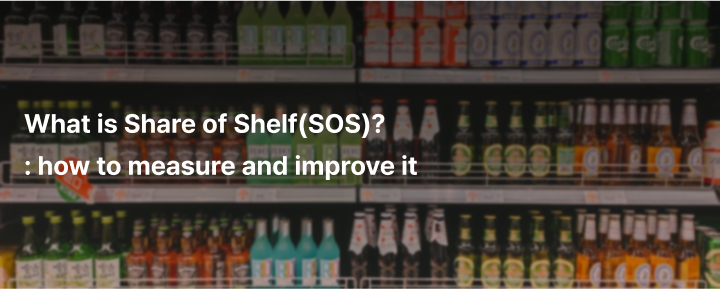

Just because a product is on the shelf doesn’t mean it sells. What really matters is whether shoppers can easily see it and pick it up. In a POS where many brands compete, your product might be hidden in a corner or placed too low to be seen.
That’s where Share of Shelf (SOS) comes in. This metric doesn’t just measure presence—it tells you what percentage of shelf space your brand occupies within a category. More visible space = more chances to sell.

For example, if a beverage shelf is 1 meter wide and your brand takes up 30 cm, your SOS is 30%. This number is more than a calculation: it shows how visible your brand is and how strong your positioning is.
SOS is a key KPI in point-of-sale management, linking visibility directly with sell-through, brand presence, and retail execution.
The math is simple—as long as your method is clear:
Example:
But the way you measure shelf space may vary by product or category. Here are some industry-specific methods:
The key is to tailor SOS measurement to the product type and display layout at each POS.
SOS is more than a number. It’s a signal that helps you fine-tune your merchandising strategy at the point of sale. Here’s how to read it:
👉 In short: SOS is not the goal—it’s the starting point to align visibility, execution, and results.
A good plan means nothing if it’s not applied. That’s where POS audit comes in.

With Shopl, you can standardize your POS audit process to ensure in-store execution meets your plans and share of shelf (SOS) targets are maintained:
This way, you don’t just plan your display—you prove it on the ground: from strategy to verified execution.

